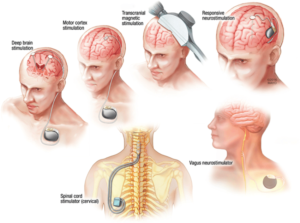Join our Upcoming Webinar
Previous Webinars
Selected Lectures from BASE 2024
How to use ChatGPT in your clinical practice?
Pain Management
Infections and multi-drug resistance
Fluid Therapy
Mechanical Ventilation
Evidence Based Practice
Anticoagulation
Preoperative Assessment
Sepsis
Dr. Ahmed Mustafa discusses the evolution of spinal cord stimulation (SCS) in neuromodulation, covering its history, mechanisms, and future advancements.


Our Topics in points Summary anytime

Neuromodulation intervention: The past, present and future of SCS
Dr. Ahmed Mustafa discusses the evolution of spinal cord stimulation (SCS) in neuromodulation, covering its history, mechanisms, and future advancements. Highlights 🔍 Historical Roots: Ancient Egyptians used electricity for pain relief, showing the long history of neuromodulation. 💡 Gate Theory: The gate control theory explains how stimulating certain nerve fibers can reduce pain signals to the brain. ⚙️ Technological Advances: The first implantable spinal cord stimulators were developed in the 1980s, evolving into modern devices. 🧠 Neurochemical Changes: SCS affects brain chemistry, leading to pain relief through various mechanisms. 📊 Patient Selection: Proper patient evaluation is crucial for SCS success, distinguishing between neuropathic and biomechanical pain. 🚀 Future Innovations: Advancements like closed-loop systems and AI-driven devices promise personalized pain management. 💼 Clinical Applications: SCS is effective for conditions like chronic pain, CRPS, and diabetic neuropathy. Key Insights 🕰️ Historical Significance: The use of electricity for pain management dates back to ancient civilizations, highlighting the foundational understanding of neuromodulation. This historical perspective emphasizes that modern practices are built on longstanding principles of pain management. 🔬 Mechanistic Understanding: The gate theory of pain suggests that stimulation of larger nerve fibers can inhibit pain transmission from smaller fibers, offering a simple explanation of how SCS works. This understanding helps in educating patients

Cryoablation: An overview of evidence and clinical use
Cryoablation is a technique using extreme cold for nerve and tissue management, particularly in pain relief, with established clinical applications and evidence. Highlights ❄️ Cryoablation Mechanism: Utilizes extreme cold to target and ablate tissue or nerves. 📊 Clinical Applications: Effective for both acute and chronic pain management. 🔍 Efficacy Evidence: Numerous studies support its use across various pain conditions. 🚑 Case Studies: Real-world examples illustrate successful cryoablation outcomes. ⚖️ Risk Considerations: Awareness of potential complications is crucial in decision-making. 📈 Comparison with RFA: Differentiates cryoablation from radiofrequency ablation in terms of application. 🔬 Future Potential: Promising opportunities for innovative uses in pain management. Key Insights ❄️ Mechanism of Action: Cryoablation induces a conduction block in nerves by creating ice crystals, leading to long-lasting pain relief. This reversible axonal injury allows for a gradual recovery of nerve function, making it distinct from permanent ablative techniques. 🩺 Diverse Applications: The technique is versatile, effectively treating conditions like intercostal neuralgia, post-surgical pain, and neuropathic pain, highlighting its role in comprehensive pain management strategies. 📊 Evidence-Based Support: Various studies demonstrate cryoablation’s effectiveness, especially in post-operative pain and chronic conditions, reinforcing its clinical relevance and utility. 🧪 Case Studies: Real-world applications showcased positive outcomes, with patients experiencing significant pain relief and improved quality of life, underscoring

Safety during pain management intervention
Safety in pain management interventions is crucial to prevent harm, minimize adverse reactions, and ensure consistent, reproducible techniques. Highlights 🛡️ Safety First: Pain management should prioritize patient safety and avoid harm. 🧪 Adverse Reactions: Low incidence of adverse reactions is essential for safe interventions. 🎯 Technique Precision: Image guidance improves precision and safety in procedures. ⚠️ Contamination Risks: Contaminated drugs can lead to severe complications, as seen in past cases. ⚕️ Patient Evaluation: Understanding patient history and risk factors is vital for safe interventions. 🔍 Emergency Preparedness: Facilities must be equipped for emergencies to handle complications swiftly. 📚 Continuous Learning: Ongoing training and adherence to protocols enhance safety in pain management. Key Insights 🛡️ Emphasis on Safety: Safety should be the cornerstone of all pain management practices. Interventions must be designed to prevent harm and adverse effects, ensuring a risk-benefit analysis favors patient welfare. 📈 Importance of Guidelines: Following established guidelines and protocols is crucial for minimizing complications. Deviating from these can lead to devastating outcomes, highlighting the need for systematic approaches in practice. 👁️ Image Guidance Benefits: Utilizing imaging techniques like fluoroscopy and ultrasound enhances precision in injections, reducing the likelihood of complications related to improper technique and needle placement. ⚠️ Learning from Past Errors: Historical cases of complications, such






























